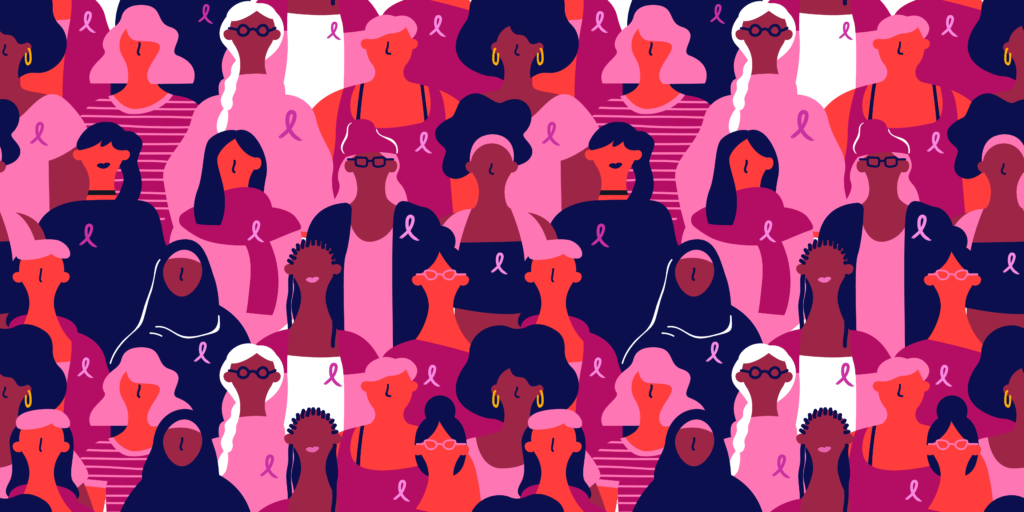Pride Month in June presents a fantastic opportunity for companies to engage with the LGBTQ+ community and send a visible message of support for LGBTQ+ rights. But if your inclusion agenda starts and stops there, you should be asking yourself why.
The past two decades have brought a huge amount of progress for LGBTQ+ people as countries around the world have adopted long-awaited legislative change. More and more people feel comfortable coming out, with a 2021 survey finding 7.1% of Americans now identify on the LGBTQ+ spectrum, up from 3.5% in 2012.
Unfortunately, many businesses haven’t kept pace. A shocking 45% of lesbian, gay and bisexual people recently surveyed by IBM said their employers discriminate based on sexual orientation, and about two in three said they have had to work harder to succeed because of their identity. Many felt compelled to hide or downplay aspects of their identity from their colleagues to avoid discrimination and harassment – a heavy burden to carry in the workplace.
Research shows that LGBTQ+ friendly companies are generally more profitable, with diverse cultures proven to boost innovation, raise morale and improve talent retention – but it’s clear that many organizations are still missing the mark. This is particularly obvious during Pride Month, when brands often perform public gestures of diversity and inclusion without looking more closely at their own internal policies.
So how can companies avoid the trap of “pinkwashing” and ensure their inclusive message matches their actions?
1. Ask the right questions
Consistency is everything. If you catch yourself thinking about your LGBTQ+ employees only in June, that’s a red flag. To me that says a company is only concerned about their outward messaging and not about driving real change. But that doesn’t mean that your efforts can’t begin with Pride month – you have to start somewhere, and making a public display of support is a good first step. So yes, the rainbow flags are important, but they’re just the beginning. How are you treating LGBTQ+ employees for the other 11 months of the year?
At this point leaders should be assessing the landscape within their own business and asking themselves some tough questions. For example, how are you thinking about your parental leave policies? Let’s start with the language – are you still calling it maternity leave? How are other parents recognized in your policy, and do you give equal opportunities regardless of gender?
Another clear signal that a company is serious about its LGBTQ+ agenda is establishing a system to reward inclusivity. When you see good examples of mindful inclusion, how do you recognize and encourage these behaviors? As many as 87% of HR professionals believe reward and benefits play a role in diversity and inclusion, and this can be a good step for driving engagement with these issues. But it’s important to understand that there is no quick fix for company culture.
One key issue that is often neglected is how companies ensure the safety of their workforce abroad. What happens if an LGBTQ+ employee is assigned to a role in a country that doesn’t have the legal framework to support them? How will you ensure their security? If they’re unable to accept the position, how will this impact their career trajectory? If you don’t have the answers, you need to start these conversations.
2. Strike a balance
Unfortunately, concerns over the tone of these conversations can make companies hesitate. The subject of LGBTQ+ inclusion can be quite emotive, and I often sense a feeling of paralysis from those who are afraid of approaching it in the wrong way. We hear individuals say they feel like an LGBTQ+ ally, but they don’t feel able to speak out in support of this issue because they’re afraid of saying something wrong. So they simply don’t engage, which can potentially be worse. In many organizations you see shocking levels of discriminatory humour and micro-aggressions, and this should never be ignored.
Many of these problems come down to a lack of understanding, and this is where education is essential. Often people will focus their attention on the issues they understand and avoid the ones they don’t. For example, they might be comfortable talking about LGB people but freeze up when it comes to trans or non-binary identities because they think it’s too complex. That results in marginalized groups being overlooked in conversations and policies, because people just think, “Let’s not go there.”
That said, allies should be mindful that mistakes are going to happen. Don’t expect perfection – accept that the wrong things will occasionally be said, but that’s part of the journey and the dialogue. Punishing or ostracizing people for these missteps is often counterproductive, as tolerance is key to encouraging conversation. It’s important to call out bad behavior, but censoring people is not the right route either.
3. Challenge the bias
Employers have an important role here in guiding these conversations in a healthy way, creating space for LGBTQ+ people to bring their experiences to the table and share their stories from an emotional standpoint. Some of the most powerful lessons come from external speakers or even a company’s own employees. I’ve seen several great examples from organizations that recognize their understanding on LGBTQ+ issues is limited, but rather than avoiding it, they create learning opportunities for their staff. They open a platform for discussion, encouraging a curious mindset and allowing their people to ask questions together.
Typical corporate diversity training does little to challenge ingrained prejudice, recent research shows, and asking people to fight stereotypes through training can actually make those stereotypes more prevalent in a person’s mind. This training can be good for raising awareness for those with less exposure to the LGBTQ+ community, but beliefs formed over a lifetime are hard to change over the course of a single session. Engaging with real people, however, can make all the difference. You can’t train someone not to be biased, but you can help them to confront those biases by showing them other lived experiences.
One of the best examples of LGBTQ+ inclusion I’ve seen came from a company that had clearly taken this lesson to heart. It was a 2019 TV advert for the Renault Clio, “30 Years in the Making,” which was released in November, long after Pride month had ended. The story was powerful in its simplicity, following a loving relationship between two women over the course of 30 years.
That was inclusion done well: it wasn’t performative, it didn’t focus on the women’s identities, it just presented an ordinary couple living their lives, and in doing so signaled Renault’s values perfectly. This is how companies can take the lead on LGBTQ+ issues – by actively demonstrating diversity and making it a part of the daily reality we live in.





